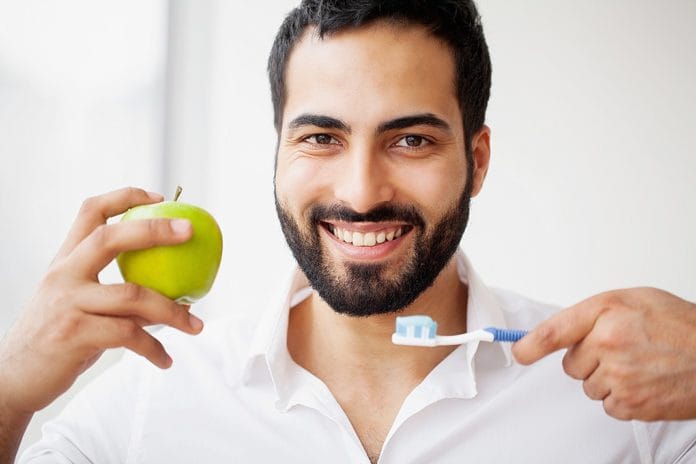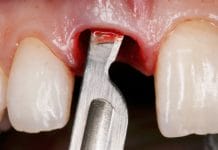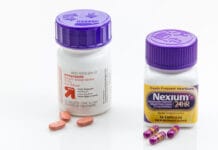In our profession, there are various opportunities to discuss overall health and well-being with our patients. While reviewing a patient’s health history, we can quickly pick up on areas we may want to highlight or discuss in further detail with the patient. One of these areas frequently visited is nutrition.
The definition of nutrition is, “The process of providing or obtaining the food necessary for health and growth.” What is not contained in this definition is how each person requires different elements to give them health based on their genetic composition and bacterial makeup. There are several different patient makeups we are familiar with as dental hygienists.
We often see patients with enamel erosion; these patients may present with hypoplasia. Hypoplastic enamel may be slick or smoother-looking on the lingual surface. These patients may present with complaints of sensitive teeth or may be prone to decay. Their teeth appear almost translucent and are somewhat thinner on average. Some possible dietary causes of these clinical findings could be GERD, alcoholism, bulimia, drug abuse, or a highly acidic diet. It has been noted in some studies patients may present with clinical acidic wear and erosion on their teeth, yet be unaware of a physical problem such as acid reflux4. Upon further questioning, we can come to determine the cause of clinical dental erosion. This is the perfect opportunity to follow up with these patients and review their nutritional needs. By doing so, we can begin to expand the assumption of our profession as dental hygienists, and patients can see us in a different light; we don’t “just clean teeth.”
Recommendations to alleviate acidic wear and dental erosion are to use straws, wait after eating/drinking for 30+ minutes to brush, and to use low abrasive toothpaste, i.e., to avoid whitening or tartar control. We may also recommend chewing gum containing xylitol or a fluoride mouthwash. In a study published in March 2018, it was found by encouraging patients to have a carbohydrate-free or highly hypoglycidal diet, the production of hydrochloric acid is reduced, and therefore acid reflux and clinical manifestations are almost eliminated4.
Another common clinical finding relating to nutrition is a high caries rate. Rarely, can this be related to a simple, overabundance of caries-causing bacteria. Often, high caries rates are directly correlated to a diet high in sugar. A discussion of a patient’s daily meals and keeping a food log can provide some insight as to how much sugar they consume. It has been found having one instance of high sugar in a meal can increase the likelihood of caries and can be correlated to a higher DMFT index7. Some examples of a high sugar diet can range from the consumption of soda, juice, sports drinks, candy, fruit snacks, and frequent snacking on starchy foods. For adults, many scoops of sugar in their daily coffee can be a hidden source of high sugar intake.
Working together as a healthcare team, ranging from the OB/GYN treating the pregnant mother, to the dentist caring for her, can help to educate and reduce the incidence of early childhood caries[1]. The World Health Organization (WHO) has stressed the importance of a diet consisting of less than 10% sugars, and are hoping to reduce that to less than 5% in the near future. WHO acknowledges reducing sugar can lead to caries-free children, and heart disease and diabetes-free adults8.
How can we find the resources to educate our patients about the importance of a sugar or acidic free diet? An opportunity may be to contact your city/county public health nutrition department. They are best equipped to provide local resources and handouts that may be available in the community. Such resources may be something to include with new patient handouts. Nutritional information and links to nutrition websites can also be added to an office’s website as valuable resources for patients. The ADA website, MouthHealthy.gov, offers several resources. Another website with great information is the USDA’s choosemyplate.gov. This website provides the opportunity to evaluate, in detail, a specific patient’s needs.
It may be possible to discuss nutrition with a patient and have them return for a nutritional consult where you provide a detailed guide to caries-free and acidic-free food options that may work for that patient. As we become more familiar with dietary options, we may consider providing simple recipes at a patient visit as well. This can provide some fun discussion and also alleviate some dental apprehension. I encourage you to use nutrition counseling as an added adjunct to your homecare recommendations!
Need CE? Click Here to Check Out the Self-Study CE Courses from Today’s RDH!
Listen to the Today’s RDH Dental Hygiene Podcast Below:
References
- DiMaria-Ghalili RA1, Mirtallo JM, Tobin BW, Hark L, Van Horn L, Palmer CA. Challenges and opportunities for nutrition education and training in the healthcare professions: intraprofessional and interprofessional call to action. Am J Clin Nutr. 2014 May;99(5 Suppl):1184S-93S. Epub 2014 Mar
- Touger-Decker R1, Mobley C; Academy of Nutrition and Dietetics. Position of the Academy of Nutrition and Dietetics: oral health and nutrition. J Acad Nutr Diet. 2013 May;113(5):693-701.
- Wilder-Smith CH1,2, Materna A3, Martig L4, Lussi A5. Longitudinal study of gastroesophageal reflux and erosive tooth wear. BMC Gastroenterol. 2017 Oct 25;17(1):113
- Langella C1, Naviglio D2, Marino M3, Calogero A4, Gallo M5. New food approaches to reduce and/or eliminate increased gastric acidity related to gastroesophageal pathologies. Nutrition. 2018 Mar 22;54:26-32. doi: 10.1016/j.nut.2018.03.002
- Cai JN1, Jung JE1, Lee MH2, Choi HM3, Jeon JG1. Sucrose challenges to Streptococcus mutans biofilms and the curve fitting for the biofilm changes. FEMS Microbiol Ecol. 2018 May 17. doi: 10.1093/femsec/fiy091
- Cole DDM, Boyd LD, Vineyard J, Giblin-Scanlon LJ. Childhood Obesity: Dental hygienists’ beliefs attitudes and barriers to patient education. J Dent Hyg. 2018 Apr;92(2):38-49
- Montero J1, Costa J2, Bica I2, Barrios R3. Caries and quality of life in Portuguese adolescents: Impact of diet and behavioral risk factors. J Clin Exp Dent. 2018 Mar 1;10(3):e218-e223. doi: 10.4317/jced.54469.
- Paglia L. WHO: healthy diet to prevent chronic diseases and caries. Eur J Paediatr Dent. 2018 Mar;19(1):5.
- Connie Mobley, Ph.D., R.D., Teresa A. Marshall, Ph.D., R.D., Peter Milgrom, DDS Professor and Director, and Susan E. Coldwell, D., Associate Professor. The Contribution of Dietary Factors to Dental Caries and Disparities in Caries. Acad Pediatr. 2009 Nov–Dec; 9(6): 410–414.











